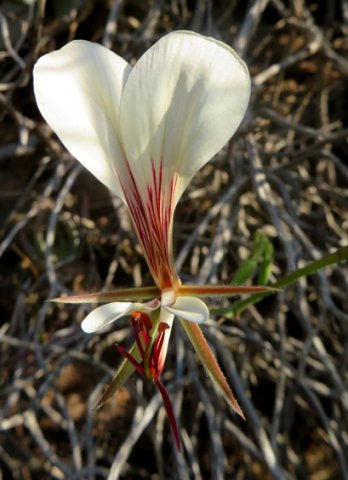Pelargonium tetragonum flower

Author: Ivan Lätti
Photographer: Thabo Maphisa
The pair of rounded, whitish petal banners of a Pelargonium tetragonum flower serves to attract insects, particularly long-tongued flies. They are known nectar seekers in these flowers and thereby pollinators of the species.
There is red-purple colouring present as well, on both the lower parts of the upper petals and the filaments of the stamens. Red is an interesting flower colour, mostly invisible to insects that have their vision shifted towards shorter waves on the violet side of the colour spectrum.
The pair of lower petals, angled out and channelled in picture, play a lowlier part in floral proceedings, but what is a flower without attention to the detail of lesser accoutrements?
Four of the five sepals spread energetically but hardly noticed at the back of the flower. The fifth one? Erect against the lower backs of the partly overlapping, upper petals and here out of sight (Vlok and Schutte-Vlok, 2015; iNaturalist).

